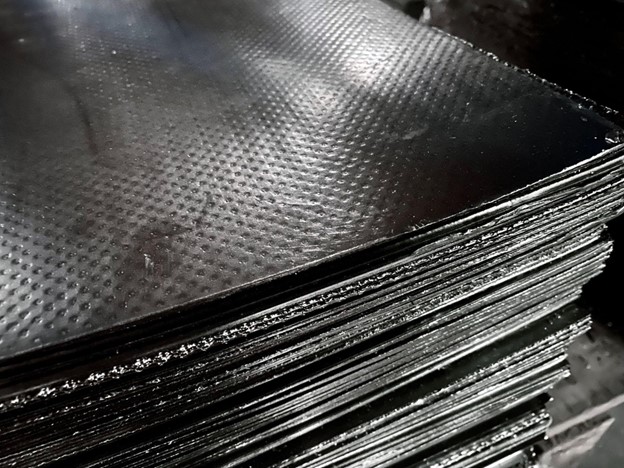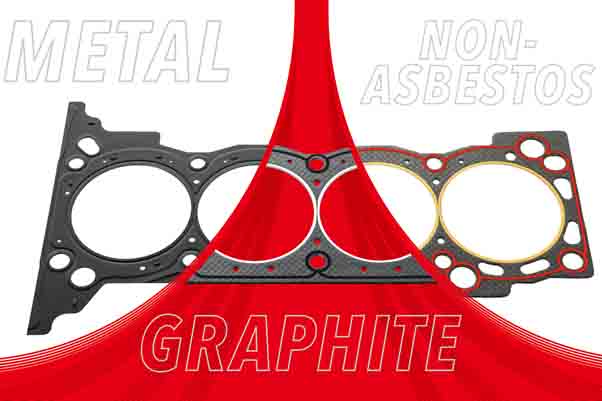- What is a gasket?
- What do gaskets actually do?
- More About Gasket
- What industries and equipment use gaskets?
- How to find the right gaskets for your application
- How to select gasket material
To the consumer, it often feels like machines run by magic. As a professional who works with engines and other advanced tech equipment, however, you appreciate that they actually rely on a complex network of different components. And all of them have to run smoothly. Gaskets are undoubtedly one of the most important features of all.
This guide will give you a better understanding of what gaskets are, what gaskets do, and when gaskets are used in machinery from different industries. Here’s all you need to know.
What is a gasket?
A gasket is an elastomeric component used in a range of machinery applications to cover the point where two different materials are connected. They are most commonly used to seal the intersection between the two target surfaces to stop leakages of liquids and gasses. However, additional attributes may include sound reduction, anti-vibration, and increased hygiene.
In many ways, gaskets serve the same purpose as a seal. The main difference between the two is that seals are used on components that rotate whereas gaskets work on items that have flat, static surfaces = such as applications where a union or flange is used.
Gaskets can be made from several flat materials, such as embossed steel, other metals, high-temperature fiber materials, graphite, ceramic composite, cork, rubber, interface materials, and composites that use a combination of the above. They should be replaced each time a machine is disassembled and reassembled.
Even in applications where machinery will work without a seal, gaskets are key to protecting efficiency, performance, hygiene, and safety for the long haul.
What do gaskets actually do?
As already stated, a gasket’s primary function is to cover the intersection between two static surfaces. Their main function is to prevent leakages, which can subsequently deliver a wide range of benefits. The list includes;
- Ensure that engines and machines can reach optimal power,
- Promote a consistent and efficient performance,
- Create eco-friendly operations due to a lack of wasted energy,
- Prevent damage to nearby components caused by heat and other issues,
- Slow the rate of wear and tear of the applications they are used to seal.
When dealing with company machines and assets, all of those issues can save the business time, money, and effort. For consumer products, like cars, it means reduced maintenance, which subsequently protects the brand’s image.
In addition to stopping leakages, the installation of a gasket over the intersecting space also creates a protective barrier for the two components being covered. In an engine, for example, this subsequently protects those items from exposure to heat, pressure, and friction caused by contact with moving parts.
One often overlooked attribute of gaskets is that they also connect surfaces that have less than perfect finishing. As such, the materials must be easily manipulated to correct those irregularities. While some applications use asbestos materials due to extreme high pressure, most gaskets now try to avoid it where possible for added safety to machine operators.
In most cases, gaskets can make a seal simply through tightening (either by hand or tool). However, there are occasions where a sealant must be applied to the gasket surface in order to guarantee no leakages.
The different types of gaskets
There are many different types of gaskets available, all of which have different properties such as resistance to chemicals, temperatures, pressures, and electromagnetic forces. However, the majority of components utilizing them will use one of the seven main types below.
- Corrugated metal gaskets, which are characterized by the use of a 0.5” or larger cross-section.
- Envelope gaskets, which feature double jacketing or have polytetrafluoroethylene on the outside of a stainless steel metalcore.
- Flat metal gaskets featuring a stainless steel core but have a low compressibility capabilities.
- Kammprofile gaskets that are primarily used in heat exchangers and feature grooved metal surfaces.
- Non-asbestos gaskets, which are made from sheet metal and used in low temperatures and low-pressure environments.
- Ring-type gaskets, also known as ring type joints or RTJs, and can be designed as either an oval or octagon shaped gasket.
- Spiral wound gaskets, which cover items with inner rings (great for high pressure) and items without inner rings.
Flange gaskets (including corrugated, flat metal, ring type, and spiral wound gaskets) fit between two sections of pipe to create a wider surface area.
The type selected will depend on the two surfaces that are being covered, as well as the conditions that they are subjected to. Details for individual applications can be found in equipment user manuals as well as industry guidelines.
More About Gasket
Valve Cover Gasket
A valve cover gasket is an engine component designed to protect cylinder head hardware from the elements and prevent oil from escaping the engine.
More about valve cover gasket: Does your valve gasket leak? What does the replacement cost?
Head Gasket
A head gasket is a small component in your engine that is used to seal the internal combustion process.
More about head gasket: Have signs of blown head gasket? What is a head gasket?
Exhaust Manifold Gasket
It is a key component of the vehicle’s engine and serves as an elastomeric component that seals the intersection between two surfaces
More about exhaust manifold gasket: What is exhaust manifold gasket & how to replace it?
Intake Manifold Gasket
The intake manifold gasket is a key component when it comes to ensuring that a vehicle has enough fluid and air in the engine.
More about intake manifold gasket: What is intake manifold gasket? Solve the leak and replacement
Graphite Gasket
Graphite gaskets can act as a mechanical seal. These are used to fill the space between two surfaces or parts that are connected.
More about graphite gasket: Graphite Gasket: The Material, Temperature Range, And More
When gaskets go bad
Given that gaskets serve as a protective barrier, it should be no surprise that they encounter wear and tear. They are exposed to the conditions that they are preventing on behalf of the covered componentes underneath. Even when they have good strong properties, they will experience wear and tear.
The good news is that this is largely attributed to aging components rather than new ones. The longevity of gaskets can be influenced by many factors, ranging from how frequently they are used to the strain caused by damage to other parts. Therefore, it is key to know the symptoms of damaged gaskets. The most common issues are;
- Overheating of machinery,
- Loud noises coming from engines,
- Visible leaking of coolants or other liquids,
- Machinery becomes less efficient,
- MAchinery fails to power up as it should.
If any of those issues occur, replacing the gasket or gaskets will often get the machinery back to its best.
What industries and equipment use gaskets?
When you consider the full range of products, gaskets are quite versatile. They are commonly found in an extensive range of vehicles including cars, trains, boats, and planes. As well as supporting the performance and longevity of engines, they are able to work as a static seal in other areas where moving parts are commonplace.
Therefore, other applications include pumps (gas and liquid) and a host of other electrical equipment. In truth, they will be found in machinery across a whole host of industries. Nonetheless, the most common are:
Automotive industries
Gaskets are used in virtually every vehicle that uses a combustion engine. Exhaust gaskets, for example, prevent gas leaks as waste gas is directed to the exhaust and new air is sucked into the engine. However, gaskets can also prevent coolant and fluids from leaking to ensure optimal performance levels and protect the surrounding parts from encountering extreme conditions. Naturally, they are used in the manufacturing factories in a wide range of parts-building processes as well as the finished vehicles themselves.
While primarily thought of as something used in cars, vans, and bikes, gaskets are used in the other vehicles mentioned above. They play a key role in planes, trains, and boats where the need to have an impenetrable seal is essential.
Power Generation
Energy industries use gaskets in a number of applications. They help reduce emissions in power-generating equipment like wind turbines and hydro energy applications. Moreover, the durable nature of gaskets (and the fact that they protect components) can reduce the need for maintenance on those items. This makes them the perfect addition for companies wanting to minimize downtime. Offshore drilling applications will need to use gaskets too, preventing leaks of materials used in the power generation processes.
Mining industries use gaskets to prevent liquid losses in several pieces of equipment to ensure safe, smooth operations. Military equipment, including weapons and vehicles, as well as deep-sea and chemical processing machinery, will use gaskets too.
Food industries
As well as providing protection against heat and pressure, gaskets create a barrier that supports hygiene and sanitation because outside debris and waste materials cannot enter the equipment. Given the importance of avoiding contamination to maintain the highest levels of product control, gaskets are used in many machines within the food manufacturing processes. Any equipment where engines or automated movements are used will probably use gaskets to seal some components.
Pharmaceutical use gaskets on various machines thanks to those hygienic properties. Filtration industries and sanitary production facilities will use gaskets in several applications too. Maintaining FDA standards is essential.
How to find the right gaskets for your application
When you require gaskets for any application, it’s imperative that you choose the most suitable solution. After all, inferior or ill-matched gaskets will inevitably struggle to handle the functions. In turn, this can lead to leaks as well as faster wear and turn, which will cost you more money in the long run. It is essential that you conduct the necessary research to find the right product to protect the equipment in question.
MEGA Gasket manufacturers and supplier stock an extensive range of gasket kits that can be used for new installations or replacement gaskets for machinery used across multiple industries and environments. Some examples include, but are not limited to;
- Cylinder head gaskets,
- Intake and exhaust manifold gaskets,
- Non-asbestos(asbestos free) gaskets
- Oil pan gaskets,
- Valve cover gaskets.
How to select gasket material
Gasket material
The material a gasket is made from will alter how it operates for a specific application. There are various materials used for producing gaskets. This makes it more difficult to choose the right option
Check out our gasket selection guide: Concise Gasket Material Types For Gasoline And Selection
When you need any of the above gaskets for automotive engines or other industrial machinery and equipment, contact MEGA Gasket to find out more information.
 |
Author: MEGA Gasket established since 1979, granted ISO 9002 in 1999 and updated to ISO 9001:2015 in 2017, and the main production is for automobile and all kind of engine gaskets. MEGA have profuse experience and good reputation in Taiwan. Learn more about MEGA Gasket manufacturer and supplier. |





